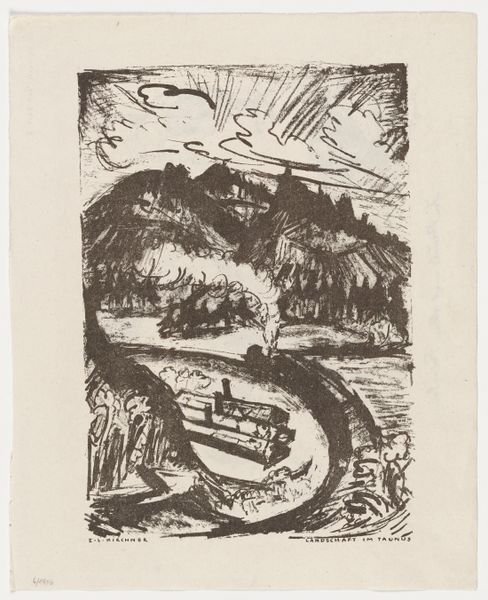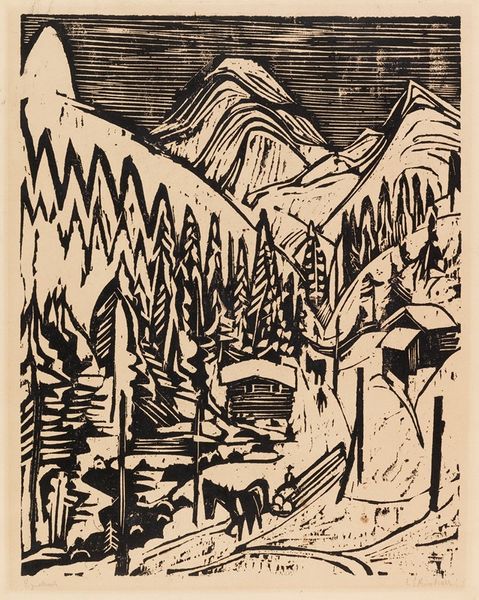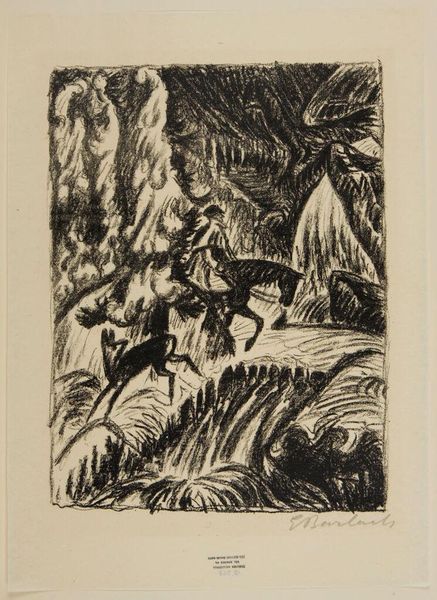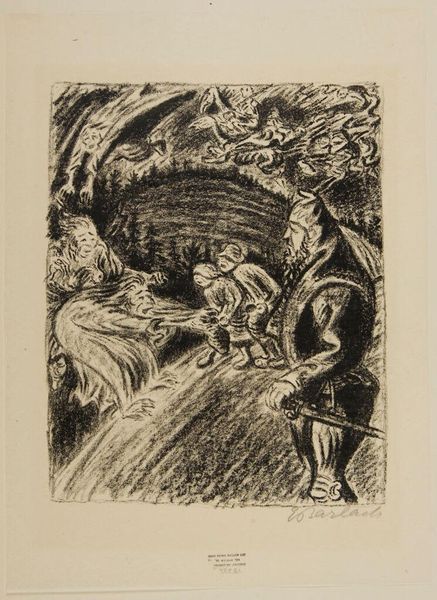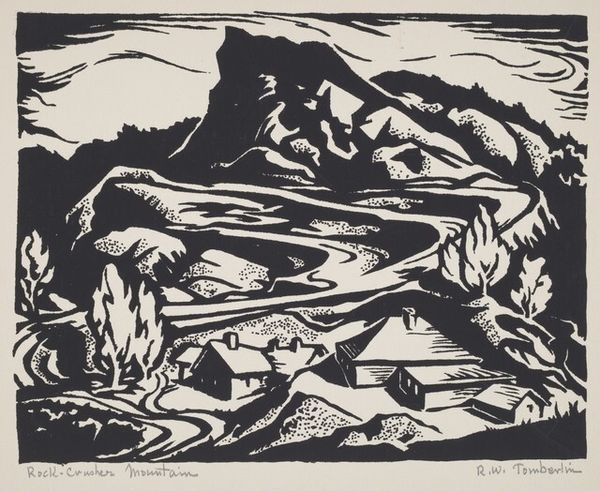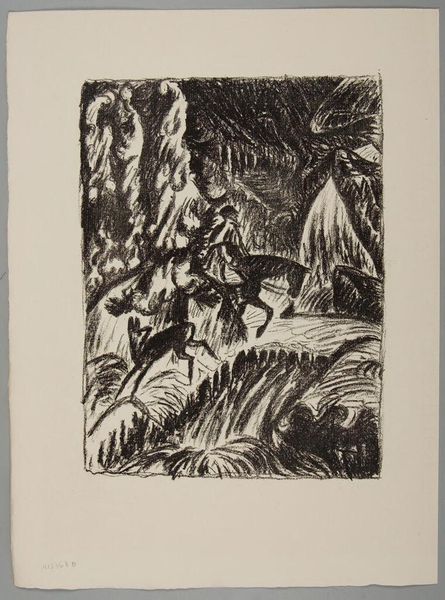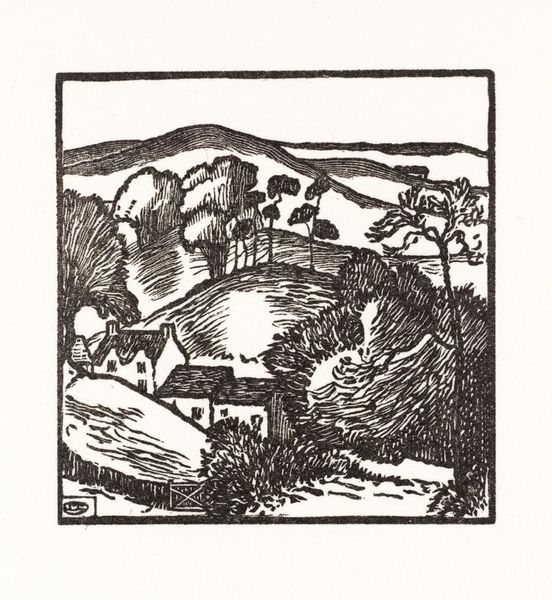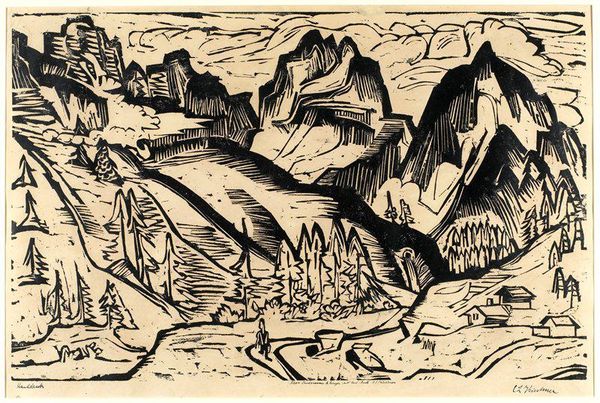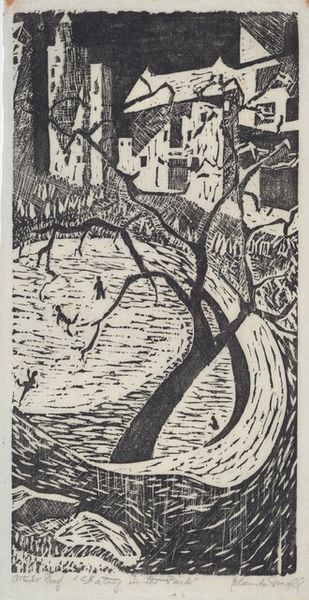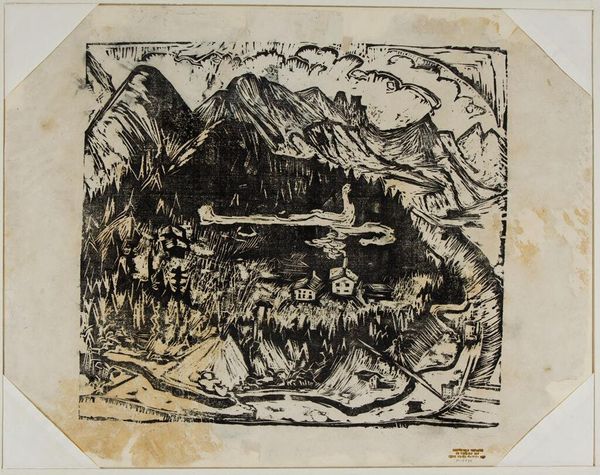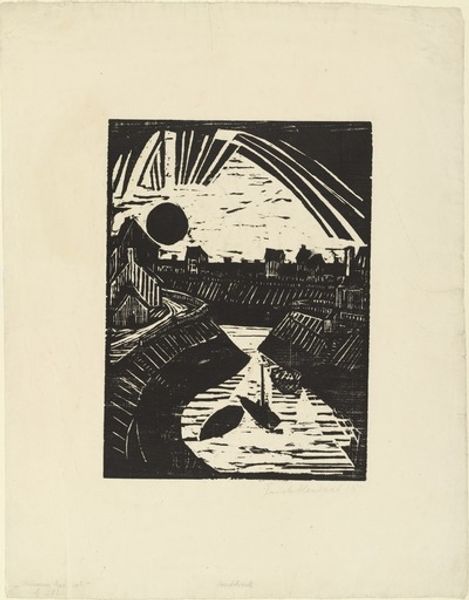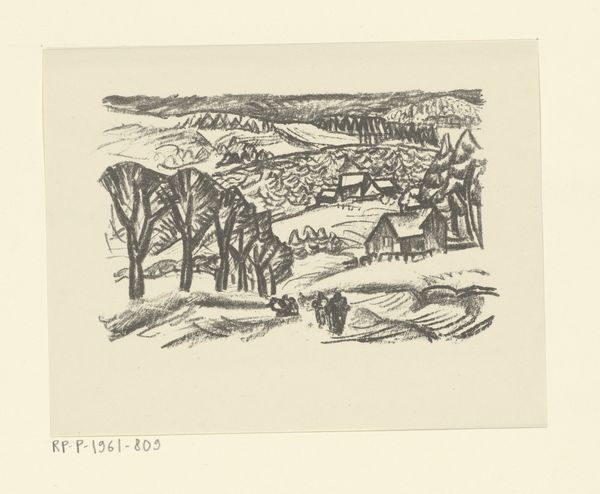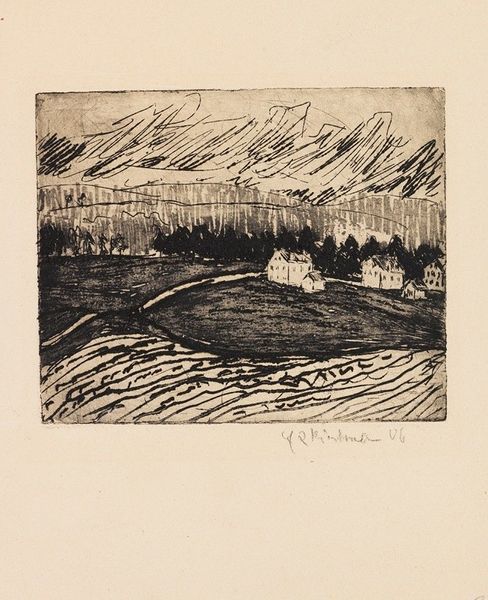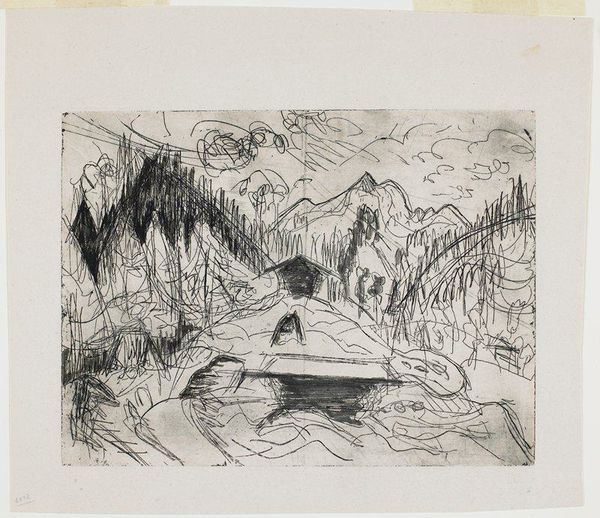
Taunus landscape, from "Der Bildermann", 1916, Issue 6 1916
0:00
0:00
Dimensions: stone: 28 x 19.8 cm (11 x 7 13/16 in.) sheet: 35.2 x 28.1 cm (13 7/8 x 11 1/16 in.)
Copyright: CC0 1.0
Editor: This is Ernst Ludwig Kirchner's "Taunus Landscape," printed in 1916. The stark, black-and-white lithograph has this frenetic energy. What can you tell me about it? Curator: Consider the materials: stone and ink, mass-produced for "Der Bildermann." Kirchner elevates printmaking, a typically commercial medium, to fine art. Notice the raw marks—evidence of his labor. What does this suggest about the relationship between artistic expression and broader social conditions during wartime? Editor: So, it's less about the landscape itself and more about how he made it and why? Curator: Exactly. The print's accessibility, its very existence as a multiple, democratizes art, placing it within reach of a wider audience during a turbulent era. The labor and process are intertwined with the social context. Editor: That's a perspective I hadn't considered. Thanks! Curator: Indeed, seeing the artmaking *as* the message gives us a new lens on Kirchner.
Comments
No comments
Be the first to comment and join the conversation on the ultimate creative platform.
